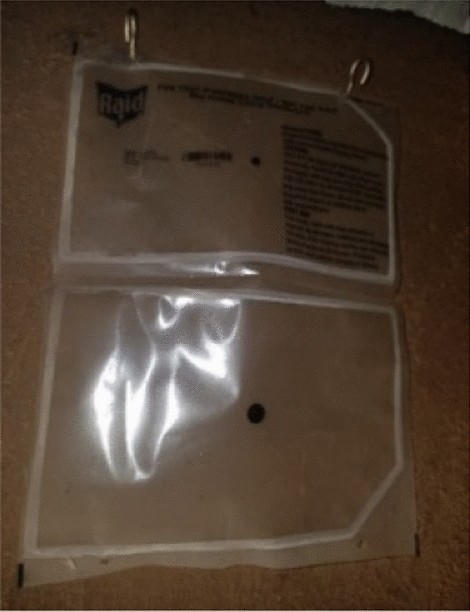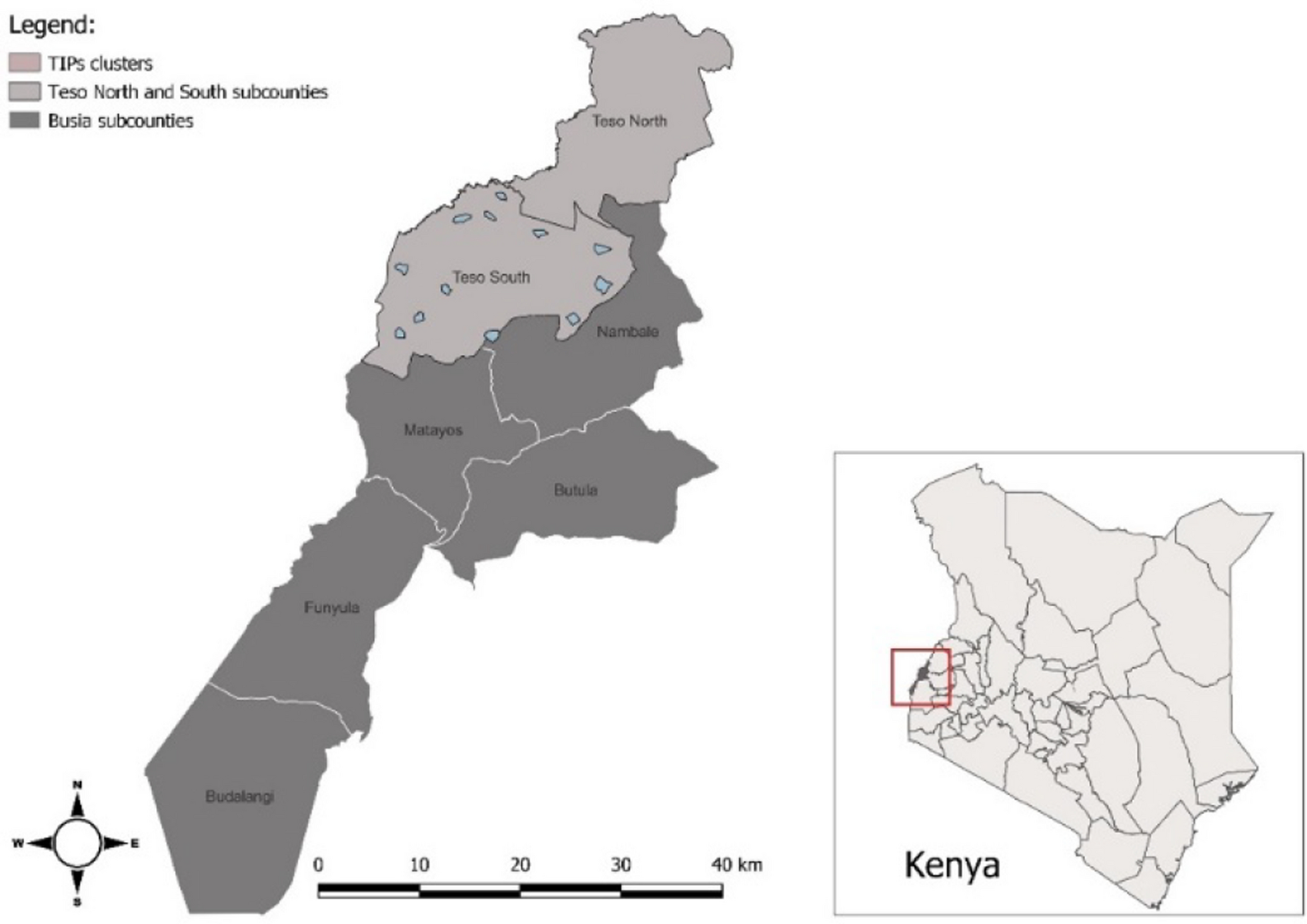A total of 60 interviews were completed during the first two rounds of data collection, covering 30 households in each round. The participants included 16 women and 14 men. The mean age of the participants was 49 years (range 35–65), with women averaging 44 years (range 35–55) and men 55 years (range 45–65).
In addition to commenting on perceived efficacy, perceived reduction in malaria cases, and side effects, participants compared the perceived performance of SR with other mosquito control methods they commonly used such as bednets, mosquito coils and burning leaves. The participants also discussed their communication with others about the product and suggested future improvements.
Perceived efficacy and early acceptability
In interviews conducted one week after initial installation, most participants reported that they noticed a reduction in mosquito density and attributed this reduction to the SR’s dawa [the power or strength of the insecticide]. Those who observed mosquitoes in the house reported that they appeared sluggish, biting and flying less aggressively than they did in the past.
“Generally, since you installed these products inside here, I have seen the mosquito population completely reduced. I can say by 99%. Previously, approximately around 7:00 p.m. while seated here [pointing at the sofa set], we would be bitten by mosquitos until when we went to sleep at 9:00 pm. Now, after the installation of the SR, the few mosquitos we see seem sluggish, often flying slowly, and even falling on their own. Additionally, since the installation, I haven’t heard any child complaining about feeling sick.” (Male, age 39, 1-week post-installation).
In the second interview, 2 months after the initial installation, some participants reported that mosquitoes had returned. They attributed this return to the belief that replacement SRs had less dawa than the initial product and lost their effectiveness after 2–3 weeks.
“How come we are now seeing signs of mosquitos, yet we were praising this product? We are requesting they improve in putting a lot of repellent so that mosquitos do not appear and later disappear. I want, if the product has been installed to repel mosquitos, let it repel mosquitos.” (Male, age 41, 2-month post-installation).
Some participants also mentioned seasonality, suggesting that the increase in mosquito frequency coincided with millet flowering or the decrease in recent hot weather. One proposed that installing the product during a peak mosquito season could have offered a clearer assessment of its effectiveness.
While most of the comments focused on mosquito density, some respondents added that fewer family members, particularly children, were falling ill with malaria.
“Since these products were installed in our houses, I have noticed that the number of mosquitos have decreased, and the level of malaria has also decreased. Because before installation, my youngest child had malaria every month, she used to be admitted to the ward. However, since these products were installed, she has never has never been sick.” (Female, age 28, 2-month post-installation).
In addition to reporting perceived reductions in mosquitoes and malaria symptoms, many participants expressed satisfaction with the SR. They described it as convenient, easy to use, and preferable to other mosquito control tools like nets or coils. These early expressions of acceptance suggest a positive initial reception of the product.
Comparison of SRs to other mosquito control products
The participants reported using other products and practices to keep away mosquitoes, including ITNs, mosquito coils, mosquito mats, and burning leaves to produce smoke that repels mosquitoes.
When asked to compare the SR to other products, respondents cited various factors including the place of protection, the cost, the product’s perceived effectiveness, and the feasibility of installation. Some mentioned that ITNs only protected them while they were sleeping whereas the SRs also offered protection when they were awake. Others reported that SRs obviated the need for ITNs.
“I can say that the SR is better than a net because a net is only used when you go to sleep. You only protect yourself with it during sleep. But with the SR, you can be protected while sitting in the evening. Mosquitoes won’t bother me because of the SR. However, with a net, you must wait until you go to sleep at 10:00 p.m to be protected.” (Female, age 32, 1-week post-installation).
“Because they have installed a product for me that repels mosquitos, I do not see the need to struggle hanging the net because it brings heat. You know during dry season like this there is a lot of heat. There is no need to interfere with the product that repels mosquitos, why not sleep comfortably?” (Male, age 41, 2-month post-installation).
The respondents also stated that the SR was less labour-intensive than an ITN and that ITNs could tear, make their living spaces hotter, and cause irritation for those who came into direct contact with them.
“It’s our first time to use spatial repellant, and we are still observing the effects. But within this short time, I see it’s effective and it’s chasing away the mosquitoes even while inside the net, the treated net may lose its effectiveness with time, then the mosquitoes just gain access to you.” (Male, age 63, 1-week post-installation).
Some added that SRs improved household finances since the study provided them at no cost.
“The spatial repellent is good because since they were installed in my house, I do not use any money by going to buy other mosquito repellents. But when I did not have [SR], mosquito coils used to cost me money. When you budget for supper, you must put the mosquito coil budget there too.” (Female, age 28, 1-week post-installation).
Perceived side effects
While most respondents reported no side effects within their own households, some mentioned observing effects on non-target organisms, including insects such as cockroaches and small animals. One participant described seeing cockroaches that appeared weakened or dead after installation of the SR:
“What I have experienced with the cockroaches in this house, you find them moving and are weak and some are even dead and others are unconscious there. They are not moving as they used to before and hiding in private places. Currently this product is also affecting them too.” (Female, age 38, 2-month post installation).
“Many viewed these effects as an additional benefit of SRs. Some, however, cited conversations in which a neighbor had mentioned side effects such as children sneezing when they got too close to the product or skin irritation experienced by one participant’s husband after touching it. Others expressed uncertainty about whether the effects experienced since installation were directly caused by the SR or by other factors. As a precaution, some participants reported keeping children at a distance from the product to avoid potential adverse effects. Those ‘Ikee’ [Ateso word for medicine or active ingredient, referring to the SR] you are not supposed to get close. At times when you are putting things in order, you need to keep distance from the ‘Ikee’ because we were advised that way. There was a time when my brother’s child who stays here, he got closer to the ‘Ikee’, he started sneezing and I told him that he is not allowed to be close.” (Female, age 41, 2-month post installation).
Suggestions for future improvement
At the first TIPs visit, the participants suggested few improvements to the SR, possibly due to their limited experience. Subsequently informants suggested changes in size, shape, colour, smell, installation method, and replacement frequency. A participant suggested alternating the SR’s colour with each replacement not due to aesthetic preference, but to make it easier to recognize whether the product has been changed especially when residents were away during installation.
Other mentioned that white was best because it was visible and matched house décor, while a few said colour did not matter as long as the product worked. Regarding shape and size, some participants suggested enlarging SRs could reduce the number of units required per household. They said they liked that the product was odourless and its general appearance but recommended extending installations to areas such as bathrooms, latrines, and schools where mosquito encounters were common, particularly during the early morning.
“Then secondly, there are those places these products were not installed. Places like the toilet. If you can find those, then you install. You know you go there anytime, it is dark, and you get bitten. Then again, within here in our home, children study in school. Our children always leave early. Exactly by 6:00 a.m. they are in class. They can get bitten by mosquitoes while there. If it is possible, they should take [SRs] to schools too.” (Male, 39, 2-month post-installation).
The participants expressed concerns about the product falling off the wall when installed with tape, which led one family to rehang a fallen product with a nail. They stated their preference for hooks, which kept SRs more securely attached to the wall (Figs. 2 and 3). Some suggested offering a range of colours (black, white, green, blue, khaki) for the products, with one linking a dark colour to attracting mosquitoes.
“The majority expressed a preference for an odorless product, considering allergies, but a few suggested that some scent was necessary for effective mosquito repellency. A recurring recommendation was to increase the amount or concentration of repellent, with diverse opinions on replacement intervals. Some participants suggested a switch to biodegradable materials to address the environmental concerns associated with plastic sheets.Another one is, we were also saying, they should try and look for a product that is friendly to the environment apart from these papers. At least, even if the project ends and they left the products for us they have not come to collect. At least it should be a material that when you throw, it rots faster.” (Male, age 39, 2-month post installation).
Family rehung fallen taped product with nail

Installation of the MosquitoShield™ with hooks
